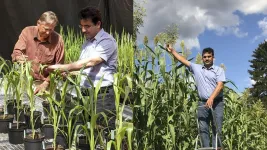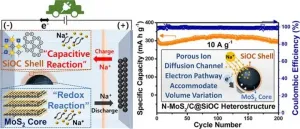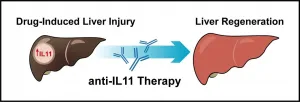Climate warming can influence fungal communities on oak leaves across the growing season
2021-06-18
(Press-News.org) Climate warming plays a larger role than plant genes in influencing the number and identity of fungal species on oak leaves, especially in autumn. Recently published in the journal New Phytologist, this research by ecologists sheds light on how warming and tree genes affect the dynamics of fungal communities across the season.
"One of our major findings was that elevated temperature decreased the number of fungal species and changed their community composition, especially in the late season" says Maria Faticov, a researcher at the Department of Ecology, Environment and Plant Sciences (DEEP) at Stockholm University.
Plants host thousands of microscopic organisms and leaves are no exception. Leaves harbour a large diversity of microorganisms including fungi, bacteria and, less frequently, archaea. Fungi are among the most diverse groups of microorganisms living on leaves. Some of these microscopic fungi cause disease, others can promote plant growth and defend leaves against biotic and abiotic stresses, and still others play an important role in leaf senescence and decomposition.
Climate is one of the main factors influencing fungal development, either directly or indirectly, by triggering plant defences.
"From earlier studies, we know that the number of fungal species and their abundance change as leaves age and the season progresses from spring to autumn. What we do not know is what role climate warming and plant genetic variation play in shaping fungal communities across the growing season" says Ayco Tack, associate professor at the Department of Ecology, Environment and Plant Sciences, Stockholm University.
To answer this question, researchers took on a challenging project - they built 6 identical cages in a field to the north of Stockholm, each cage the size of a small living room. Scientists put 132 young oak trees into the cages that represented 5 different genotypes. Half of the cages were heated from May to October using ceramic heaters. The remaining ones were left as control and did not have heaters in them. The temperature in the heated cages was increased by ca 2°C to mimic the global temperature increase predicted by scientists to occur by the end of the century. Researchers collected leaves in the early, middle and late growing season and used DNA sequencing to find out which fungi had colonised the leaves. This way they could compare the changes in fungal community structure between the control and warming treatment and also among oak genotypes.
"We observed that fungal community composition drastically changed from spring to autumn, with yeasts increasing in relative abundance and fungal pathogens decreasing. Interestingly, while experimental warming had a major impact on the fungal community, oak genotype explained only a minor part of the variation in the number of fungal species and their composition" says Maria Faticov.
These findings suggest that warming is one of the most important environmental factors shaping fungal community development during the growing season and emphasizes how profound the effects of ongoing climate change may be to plant health and ecosystem functioning.
Researchers did not link the observed change in fungal community structure under warming with plant health and ecosystem functioning. More detailed long-term experiments are needed to predict how changes in the fungal community under climate warming will influence the plants they live on and their surrounding environment.
"In future studies, it will be interesting to investigate how these changes in the number of fungal species and their abundances under warmer climate impact such important processes as plant health, leaf senescence and litter decomposition" says Maria Faticov.
INFORMATION:
About the study:
The study was published in New Pythologist: https://nph.onlinelibrary.wiley.com/doi/10.1111/nph.17434
Co-authors of the study include Ahmed Abdelfattah, Institute of Environmental Biotechnology in Graz; Tomas Roslin, Swedish University of Agricultural Sciences in Uppsala; Corinne Vacher, INRAE, University of Bordeaux in France; Peter Hambäck, Stockholm University; Guillaume Blanchet, University of Sherbrooke in Canada, Björn Lindahl, Swedish University of Agricultural Sciences in Uppsala and Ayco Tack, Stockholm University.
Contact information:
Maria Faticov, researcher at the Department of Ecology, Environment and Plant Sciences (DEEP) at Stockholm University
E-mail: maria.faticov@su.se
Tel: + 46 72 975 59 69
[Attachments] See images for this press release:

ELSE PRESS RELEASES FROM THIS DATE:
2021-06-18
In this proof-of-concept study, Maja Skov Kragsnaes and colleagues evaluated efficacy and safety of FMT in people with psoriatic arthritis (PsA). PsA is an inflammatory arthritis that causes a person's joints to become stiff and painful. It is often found people with the skin condition psoriasis, and there is also a link between PsA and inflammatory bowel disease or gastrointestinal symptoms.
This double-blind, parallel-group, sham-controlled, superiority trial randomly allocated31adults with active peripheral PsAd espite ongoing treatment with methotrexate to one gastroscopic-guided FMT procedure, or sham transplantation into the duodenum. The transplants (50 g faeces) came from one of four healthy, anonymous stool ...
2021-06-18
Massive heavy-lift crane vessels, capable of hauling thousands of tons, navigate the rough waves and strong winds offshore to construct wind turbines and oil fields in the ocean. An international team of researchers has developed a new modeling system to help improve the control, and ultimately the safety, of such vessels. They published their approach in the April issue in IEEE/CAA Journal of Automatica Sinica.
"Dynamic positioning allows the ship to stay fixed in a certain location, by acting on the thruster," said paper author Simone Baldi, professor in the School of Mathematics and School of Cyber Science and Engineering, Southeast University in China, and guest with the Delft Center for System and Control, Delft University of Technology in the Netherlands.
This positioning operation ...
2021-06-18
Sweet sorghum can be used to produce biogas, biofuels, and novel polymers. In addition, it can help replace phosphate fertilizers. A new sweet sorghum variety developed at Karlsruhe Institute of Technology (KIT) accumulates particularly high amounts of sugar and thrives under local conditions. As the scientists reported in the Industrial Crops & Products journal, sugar transport and sugar accumulation are related to the structure of the plants' vessels. This was the result of a comparison between sweet and grain sorghums. (DOI: 10.1016/j.indcrop.2021.113550)
As the world's population grows, the demand for food, raw materials, and energy is also on the rise. This increases the burden on the environment and the climate. One strategy to reduce greenhouse gas emissions is to grow so-called ...
2021-06-18
Scientists have developed a new technique that could revolutionise medical imaging procedures using light.
A team of physicists, led by Dr David Phillips from the University of Exeter, have pioneered a new way in which to control light that has been scrambled by passage through a single hair-thin strand of optical fibre. These ultra-thin fibres hold much promise for the next generation of medical endoscopes - enabling high-resolution imaging deep inside the body at the tip of a needle.
Conventional endoscopes are millimetres wide and have limited resolution - so cannot be used to inspect individual cells. Single optical fibres are approximately 10x narrower and can enable much higher-resolution imaging - enough to examine the features of individual ...
2021-06-18
Various automobile companies are preparing to shift from internal combustion (IC) engine vehicles to electric vehicles (EVs). However, due to higher cost, EVs are not as easily accessible to consumers; hence, several governments are subsidizing EVs to promote sales. For EV costs to compete with those of IC engine vehicles, their batteries, which account for about 30% of their cost, must be more economical than that of IC-based vehicles.
The Korea Institute of Science and Technology (KIST) has announced that Dr. Sang-Ok Kim's team at the Center for Energy Storage Research had developed a novel, high-performance, economical anode material for use in sodium-ion secondary batteries, which are ...
2021-06-18
New classes of drugs are biologic disease-modifying anti-rheumatic drugs (bDMARDs) and Januskinase inhibitors (JAKi). At the 2021 EULAR congress, Strangfeld and colleagues shared new data assessing the effects of these medications on the risk of serious infections in elderly people with RA. RA is an inflammatory autoimmune disease that causes pain, swelling, and stiffness in the joints, but it also affects other organ systems through underlying systemic inflammation, causing for example cardiovascular diseases or fatigue.
RABBIT is a prospective, observational cohort study in Germany. ...
2021-06-18
The loss of a loved one can be a defining moment, even in the animal world. In chimpanzees, for example, individuals whose mothers die when they are young are smaller than their counterparts, reproduce less and are also more likely to die at a young age. But why? To find out, an international research team* led by a CNRS researcher** studied the short- and long-term effects of maternal loss on the stress levels of orphaned chimpanzees over a 19-year period. By comparing the levels of a stress hormone marker, cortisol, between young and adult orphans and non-orphans, the scientists found that young ...
2021-06-18
The body is well protected against invading pathogens by barriers such as the skin. But if you injure yourself and break your skin, pathogens can easily enter your body through the wound and cause severe infections. If this occurs, the innate immune system takes over the first rapid defense with an effective arsenal of cellular weapons infiltrating the wounded tissue in large numbers. As one of the first cell types on the spot, neutrophil granulocytes are recruited within few hours from the bloodstream to the infection site to eliminate potential microbial invaders.
Swarming against infections
"Neutrophils are very efficient in hunting and ...
2021-06-18
Singapore, 18 Jun 2021 - Scientists at Duke-NUS Medical School and National Heart Centre Singapore (NHCS), in collaboration with colleagues in Singapore and the UK, have shown that the human form of the signalling protein interleukin 11 (IL-11) has a damaging effect on human liver cells--overturning a prior hypothesis that it could help livers damaged by paracetamol poisoning. The finding, published last week in Science Translational Medicine, suggests that blocking IL-11 signalling could have a restorative effect.
Paracetamol, also called acetaminophen, is a widely available over-the-counter painkiller, and an overdose can lead to serious liver damage and even death. It is the most common pharmaceutical ...
2021-06-18
Most of us have heard of Alzheimer's disease, a neurodegenerative disorder marked by brain cell death and the shrinking of the brain. It is the most common cause of dementia and cognitive impairment, which typically have a devastating effect on a person's quality of life. There is still no cure for Alzheimer's.
One way of tackling the progression of Alzheimer's disease (AD) is to prevent the underlying adverse changes in the brain. A team of researchers from the National Centre for Biological Sciences (NCBS) has recently published a study in the Journal of Medicinal Chemistry, dedicated to neuroprotection against these toxic changes. They used tiny free-living soil worms --called Caenorhabditis elegans--and the often-ornamental ...
LAST 30 PRESS RELEASES:
[Press-News.org] Climate warming can influence fungal communities on oak leaves across the growing season






